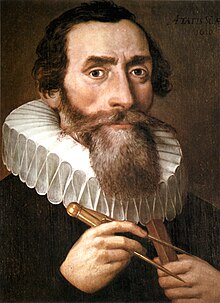
Johannes Kepler was a German astronomer, mathematician, astrologer, natural philosopher and writer on music. He is a key figure in the 17th-century Scientific Revolution, best known for his laws of planetary motion, and his books Astronomia nova, Harmonice Mundi, and Epitome Astronomiae Copernicanae, influencing among others Isaac Newton, providing one of the foundations for his theory of universal gravitation. The variety and impact of his work made Kepler one of the founders and fathers of modern astronomy, the scientific method, natural and modern science. He has been described as the "father of science fiction" for his novel Somnium.
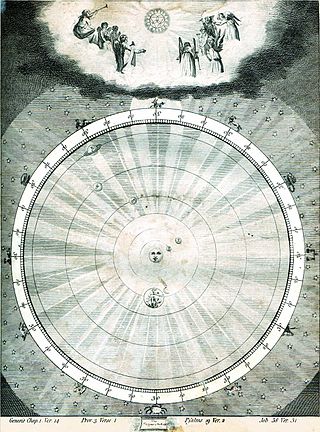
The musica universalis, also called music of the spheres or harmony of the spheres, is a philosophical concept that regards proportions in the movements of celestial bodies—the Sun, Moon, and planets—as a form of music. The theory, originating in ancient Greece, was a tenet of Pythagoreanism, and was later developed by 16th-century astronomer Johannes Kepler. Kepler did not believe this "music" to be audible, but felt that it could nevertheless be heard by the soul. The idea continued to appeal to scholars until the end of the Renaissance, influencing many schools of thought, including humanism.

Mathis der Maler is an opera by Paul Hindemith. The work's protagonist, Matthias Grünewald, was a historical figure who flourished during the Reformation, and whose art, in particular the Isenheim Altarpiece, inspired many creative figures in the early 20th century.

Harmonice Mundi (Harmonices mundi libri V) (Latin: The Harmony of the World, 1619) is a book by Johannes Kepler. In the work, written entirely in Latin, Kepler discusses harmony and congruence in geometrical forms and physical phenomena. The final section of the work relates his discovery of the so-called third law of planetary motion.
Josef Metternich was a German operatic baritone.

Der Prinz von Homburg is a German-language opera in three acts by Hans Werner Henze with a libretto by Ingeborg Bachmann (1926–1973). It was completed in 1958 but premiered on 22 May 1960 in Hamburg.
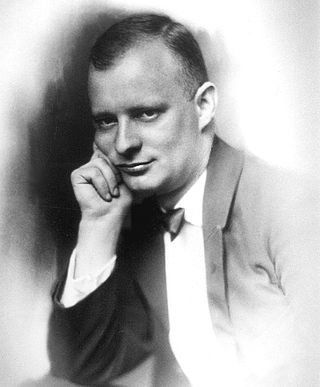
Cardillac, Op. 39, is an opera by Paul Hindemith in three acts and four scenes. Ferdinand Lion wrote the libretto based on characters from the short story Das Fräulein von Scuderi by E. T. A. Hoffmann.

Katharina Kepler was a woman from Leonberg, Württemberg, who was the mother of the famous astronomer Johannes Kepler. She was accused of witchcraft in 1615, but was defended by her son and released.

Der Protagonist is an opera in one act by Kurt Weill, his Op. 15. The German libretto was written by Georg Kaiser based on his own play of the same name of (1920). Weill's first surviving opera has been described as Literaturoper.
Richard Holm was a German operatic tenor, particularly associated with Mozart, though he sang a wide range of roles.
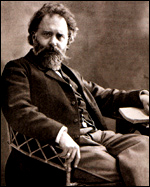
Der Evangelimann is an opera in two acts by the Austrian composer Wilhelm Kienzl. The libretto, by the composer, is based on Leopold Florian Meissner's short story "Aus den Berichten eines Polizeikommissärs". It was adapted in 1924 as a silent film The Evangelist.

Das Nusch-Nuschi, Op. 20, is an opera in one act by Paul Hindemith, with a German libretto by Franz Blei.

Mörder, Hoffnung der Frauen is an opera in one act by Paul Hindemith, written in 1919 on a German libretto by Oskar Kokoschka which he based on his play of 1907. The opera was the first in a triptych of expressionist one-act operas, the others being Das Nusch-Nuschi, and Sancta Susanna. They were the first operas written by Hindemith. The first two were premiered together in Stuttgart on 4 June 1921, all three were performed at the Oper Frankfurt in 1922.

Neues vom Tage is a comic opera in three parts by Paul Hindemith, with a German libretto by Marcellus Schiffer.

The Long Christmas Dinner is an opera in one act by Paul Hindemith, with an English libretto by Thornton Wilder based on his 1931 play of the same name.

Hin und zurück is an operatic 'sketch' in one scene by Paul Hindemith, with a German libretto by Marcellus Schiffer. It acts as a parody of conventional opera tropes featuring a coloratura ariette, a jealousy duet, and a terzet for the tenor, baritone and bass.
Dezső Ernster was a Hungarian opera singer who sang leading bass roles with the New York Metropolitan Opera from 1946 to 1963. In 1929, he created the role of Baron d'Houdoux in Hindemith's Neues vom Tage.

Bluthochzeit is an opera in two acts by Wolfgang Fortner. The libretto, also by Fortner, is based on Enrique Beck's German translation of García Lorca's 1933 play Bodas de sangre. It premiered at the Cologne Opera on 8 June 1957.

The NDR Chor is the choir of the German broadcaster Norddeutscher Rundfunk (NDR), based in Hamburg. It was founded in 1946, with Max Thurn as the first director of then 55 singers. The group has participated in premieres of contemporary music, such as the posthumous concert premiere of Schoenberg's opera Moses und Aron. It is also known for a capella music, introduced by Helmut Franz such as a recording of all such works by Johannes Brahms. The current artistic director is Philipp Ahmann, who has held the position from 2008. NDR Chor, now a group of 28 singers, is one of the leading professional chamber choirs in Germany.
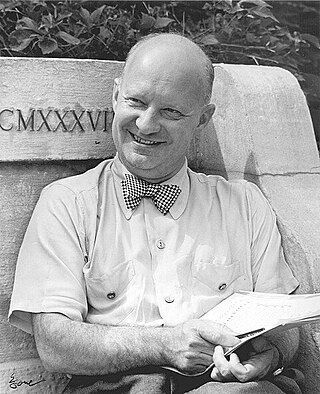
Die Harmonie der Welt Symphony, IPH 50, is a symphony by German composer Paul Hindemith composed in 1951, which served as the basis for his opera Die Harmonie der Welt.
